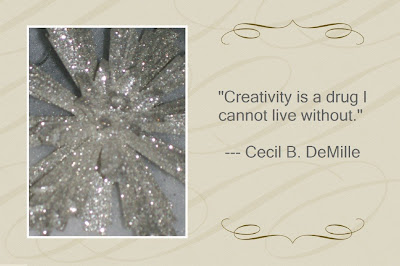I know many people have made a resolution this year to spend more time on creative projects. Ok, I am one of them! So, now is the time to clear your schedule and sign up for a creativity or arts retreat in 2008.
It’s a great opportunity to focus solely on creating without the distractions of every day life. There are retreats held in a variety of national and international locations.
Creativity Retreats
Creativity Workshop features creative writing, drawing, storytelling and memoir
Arts Retreats
ShawGuides lists arts and crafts workshops in the US and abroad
Art and Soul retreats offer instruction in paper, fabric, jewelry and fiber arts
Arcangelo Productions hosts art and life workshops focusing on collage, assemblage and photography
- Or create your own retreat by designating an hour, a day or a weekend to creating.




.jpg)
